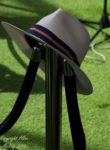 There’s no other way of saying this; 2020 has been an awful year and it’s been hard to take any kind of consolation from it. Anyone in the world of music has had to look long and hard to take any positives out of this situation. For many of us, it’s been an opportunity (or maybe a necessity) to look in the rear-view at some of the things we did in the past; gigs that we went to, albums that we bought and people that we met. I’ve moved around the country a fair amount and, in the era before media players and streaming, I had to limit the music I could move around with me. I’m not saying I was limited to five albums or, later, CDs, but these are albums that always made the cut and they’ve still had the same comfort blanket value through two lockdowns. In chronological order:
There’s no other way of saying this; 2020 has been an awful year and it’s been hard to take any kind of consolation from it. Anyone in the world of music has had to look long and hard to take any positives out of this situation. For many of us, it’s been an opportunity (or maybe a necessity) to look in the rear-view at some of the things we did in the past; gigs that we went to, albums that we bought and people that we met. I’ve moved around the country a fair amount and, in the era before media players and streaming, I had to limit the music I could move around with me. I’m not saying I was limited to five albums or, later, CDs, but these are albums that always made the cut and they’ve still had the same comfort blanket value through two lockdowns. In chronological order:
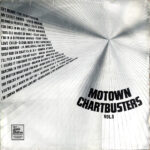 “Motown Chartbusters Vol. 3” – Various Artists
“Motown Chartbusters Vol. 3” – Various Artists
I know; it’s a compilation, but what a compilation. This was the soundtrack of my teenage years; every youth club disco, every party, every time I went to a friend’s house, this album was there. It was perfect timing, with a 1969 release just at the time that I really started to listen to music properly and had a few quid from my paper round to actually buy records.
The Chartbusters series started in 1967; if you’re a cynic, you might accuse Motown of trying to recycle material but it is the music business and it’s fair to say that this series was packed with hits. It was basically a singles industry at that time, so a compilation from a successful company made a lot of sense. So why Vol. 3? Well, the sleeve design evolved as the series progressed, reflecting current social themes, but Vol. 3 was the one where the designers nailed it; it’s simple, bold and incredibly striking and the musical content lived up to the standard of the design.
If a sixteen-song album starts with Marvin Gaye’s “Grapevine” and ends with Smokey’s “Tracks of my Tears”, there’s a lot of wiggle room for the other fourteen songs. Throw in a couple of Stevie Wonder classics, The Temptations’ “Get Ready” and Edwin Starr’s “Stop Her on Sight” and you’ve already got a classic compilation. Take a look at the entire album and it’s studded with classics and minor classics. That’s why it will always have a place in my elite albums.
I bought this the week it was released in September 1977 and took it with me to Dundee for my second year at University. I was in a shared room, but it was with Kev, my room-mate from my first year. We both played guitar and had some musical tastes in common; thankfully Steely Dan was one of those shared tastes. “Aja” was played a lot and we may have smoked some recreational substances, which may have enhanced the listening experience. In my final two years, I had my own room and, again, “Aja” didn’t stay in its sleeve very long. It was starting to look a little worse for wear. You can read the next part of this story in this piece; I don’t want to do it in detail again here. Let’s just say it burned “Aja” into my consciousness and since that time the album’s been a constant companion.
I’d been a Dan fan since the early days and, by this time, I knew to expect the unexpected but this album was something else. They had seven beautifully-constructed and slightly sleazy songs (ok, maybe more than slightly sleazy) and spent studio time with the best session musicians in the world putting together versions of the songs, picking out the seven favourites for the album. They started as jazzers playing rock and with “Aja” they arrived at jazzers playing jazz or maybe jazz-funk; going back to their roots. Like all of the albums mentioned here, this should be in everyone’s collection. It was certainly in the collection of the next band.
I’m Scottish; I’m proud to be a Scot and I used to love the times when the music industry radar periodically located Scotland on the UK map. The mid-to-late eighties was one of those periods; Deacon Blue were one of the bands to be signed and they’re still recording and gigging today. I saw them at Cornbury a couple of years ago and they sounded great with songs covering a period of thirty years. The band members mostly have new day jobs now; Ricky Ross is a radio broadcaster and Dougie Vipond is a TV presenter with BBC Scotland, but that’s all irrelevant when the sticks click and the band fires up.
I bought “Raintown” on vinyl originally and I still have that copy now. The title song was a tribute to Glasgow that spliced Blue Nile with Springsteen to create a wide canvas sound that came to define the band. As much as I loved that song, and the anthem “Dignity”, it was “When Will You (Make my Telephone Ring?)” that I connected with. It was a soul song (they even had Jimmy Helms on BVs) and it was over the top and gorgeous. It was part of an album that you needed to listen to from start to finish (turning over the vinyl halfway through), because you wouldn’t want to miss out on the opener “Born In a Storm” or the yuppie tale “Chocolate Girl”.
And you know that the Steely Dan connection is “Deacon Blues” from “Aja”, obviously.
When the Britpop wars broke out, I was missing in action. Why would anyone hitch themselves to bands that were so obviously influenced by sixties pop. Oasis was The Beatles without the subtlety and Blur was an arch Goldsmiths-enabled Kinks tribute band. We had to be better than that and I’d already committed myself to a band that had much more in common with the East Midlands surroundings I knew as a teenager. The band was from Sheffield and the songs reflected life in the North Nottinghamshire/Derbyshire/South Yorkshire area; Blur and Oasis were copying sixties bands while Pulp felt much more like a musical interpretation of Stan Barstow’s short stories.
“His ‘n’ Hers” was the breakthrough album: it wasn’t the album with the anthems that followed it and turned Pulp into an arena and Glastonbury-headlining band. “Different Class” featured “Common People” and “Disco 2000”, both complete bangers and remixed to within an inch of their lives; as much as I loved them, I still identified much more with the characters and the narratives of “Lipgloss”, “Babies”, ”Acrylic Afternoons” and “Do You Remember the First Time?”. This is still my favourite Pulp album and probably my favourite ‘Britpop’ album.
Only a few months after “His ‘n’ Hers” and so different. If Sheffield defined Pulp, then Bristol defined Massive Attack. The first Massive Attack album “Blue Lines” three years earlier was already firmly embedded in my consciousness. “Unfinished Sympathy” was a classic single and Shara Nelson had a perfect voice to front up the songs. Massive Attack wasn’t a prolific band (quality rather than quantity) and by the time “Protection” came along, Shara had moved on, replaced by a mix of singers and rappers including Tracey Thorn, Tricky, Nicolette and Horace Andy. Along with close neighbours Portishead, Massive Attack defined trip-hop, mixing influences from hip-hop and dub, creating a sound that was both ambient and punchy.
The title song has always pushed my buttons; it’s gorgeous. The bass is thunderous (particularly for a slow ballad), while the guitar, keys and vocals are all crystal clear with a shimmering touch of reverb. The mix is full of space and all of the individual elements stand out. And there’s Tracey Thorn’s almost effortless but incredibly powerful vocal. It’s a classic song and it sets the tone for the album; loads of punchy bass and spacy, dubby mixes – trippy even. The kind of music that might accompany a spliff or two. Which takes us back to my second selection.
Ok, call me obsessive if you like but as well as listening to a lot of albums and going to as many gigs as I can, I also read the odd book or two about music and popular culture and many of those are worth sharing with anyone who checks out MusicRiot regularly. This list was difficult to pin down to five from the start, but it became even more difficult on Christmas Day when I was given a copy of the Donald Fagen memoir/tour diary/article compilation, “Eminent Hipsters”. So I guess that’s a pretty good place to start.
“Eminent Hipsters” – Donald Fagen
 Where do I start with Donald Fagen? With Walter Becker, he was half of one of my favourite 70s bands, Steely Dan and then went on to release the classic solo album, “The Nightfly” in 1982, followed (not too closely) by “The Kamakiriad” in 1993. You’ve probably guessed by now, I’m a bit of a fan. “Eminent Hipsters” is partly an explanation, through a series of articles, of the factors which influenced the Steely Dan sound (cool jazz, cop dramas and wise-ass comedians) and the Donald Fagen solo sound (science fiction and mid-century paranoia). If you love the music, you’ll be fascinated by these observations about its roots. The second part of this slim volume is devoted to Fagen’s diary from the 2012 “Dukes of September Rhythm Revue” tour which is, by turn, snarky, moving, insightful and downright hilarious.
Where do I start with Donald Fagen? With Walter Becker, he was half of one of my favourite 70s bands, Steely Dan and then went on to release the classic solo album, “The Nightfly” in 1982, followed (not too closely) by “The Kamakiriad” in 1993. You’ve probably guessed by now, I’m a bit of a fan. “Eminent Hipsters” is partly an explanation, through a series of articles, of the factors which influenced the Steely Dan sound (cool jazz, cop dramas and wise-ass comedians) and the Donald Fagen solo sound (science fiction and mid-century paranoia). If you love the music, you’ll be fascinated by these observations about its roots. The second part of this slim volume is devoted to Fagen’s diary from the 2012 “Dukes of September Rhythm Revue” tour which is, by turn, snarky, moving, insightful and downright hilarious.
Donald Fagen writes in an instantly-identifiable style betraying a debt to Raymond Chandler and Dashiell Hammett, which sneaks in when describing Audrey Hepburn in “Breakfast at Tiffany’s” as getting :”out of that cab on Fifth Avenue in a black dress and pearls in the early morning, I wanted to sip her through a straw”. It’s beautifully written and you can get through it in a few hours; it takes 170 pages to deliver a message that most rock biographies take at least five times as long to get over.
“Bedsit Disco Queen: How I Grew Up and Tried to be a Pop Star” – Tracey Thorn
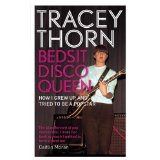 If Donald Fagen’s prose style is easily identifiable, then Tracey Thorn’s is even more so. I’m always impressed when musicians get this right (Peter Hook and Luke Haines also do it particularly well) and, from the first paragraph, this is pitch-perfect ‘Popstar Trace’. The book takes us from the Marine Girls beginnings through the EBTG false starts and eventual success to the beautiful Massive Attack vocals (I’m biased, but you should read about the origins of the modern classic, “Protection” here) and the worldwide Todd Terry-remixed success of “Missing”.
If Donald Fagen’s prose style is easily identifiable, then Tracey Thorn’s is even more so. I’m always impressed when musicians get this right (Peter Hook and Luke Haines also do it particularly well) and, from the first paragraph, this is pitch-perfect ‘Popstar Trace’. The book takes us from the Marine Girls beginnings through the EBTG false starts and eventual success to the beautiful Massive Attack vocals (I’m biased, but you should read about the origins of the modern classic, “Protection” here) and the worldwide Todd Terry-remixed success of “Missing”.
Tracey’s style is perfectly self-deprecatory; you never feel a hint of false modesty and the mentions of famous musicians are always very matter-of-fact, including the story about waiting to pick the kids up from school and being shouted at by George Michael from a Range Rover. This is a wonderful memoir from a genuine pop star.
“Yeah, Yeah, Yeah: The Story of Modern Pop” – Bob Stanley
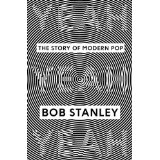 It’s obvious from the outset that this is actually a companion piece to the classic 2012 St Etienne album, “Words and Music”. The album was a voyage through the history of British pop music and the book is an extended verbal remix of the ground covered by the album. What’s equally obvious is that Bob Stanley is both an enthusiast and an insider, which gives him a unique perspective on his subject. He aims to show the links between different styles using not just the music, but also sociological and technological developments. If you’re interested in the history of pop music and you’ve done a bit of research, you might disagree with some of his pronouncements, but it’s a big book and you’ll probably agree with ninety per cent of them.
It’s obvious from the outset that this is actually a companion piece to the classic 2012 St Etienne album, “Words and Music”. The album was a voyage through the history of British pop music and the book is an extended verbal remix of the ground covered by the album. What’s equally obvious is that Bob Stanley is both an enthusiast and an insider, which gives him a unique perspective on his subject. He aims to show the links between different styles using not just the music, but also sociological and technological developments. If you’re interested in the history of pop music and you’ve done a bit of research, you might disagree with some of his pronouncements, but it’s a big book and you’ll probably agree with ninety per cent of them.
The book takes the first NME chart in 1952 as its starting point (which is logical and not controversial) and the end of vinyl as a chart force in 1993 as its end point, when the first Number One singles not to have been released as a 7” single or (a few months later) on vinyl at all topped the charts (if you want to know what they are, you can buy the book ). It’s a slightly more controversial choice but still with a logical basis for someone who grew up in the age of vinyl. The book has an authority derived from Bob Stanley’s experience as a writer and member of a very successful pop group but never slips into the socio-cultural academic approach of, for example, Simon Reynolds. The theme that underpins everything else in this book is that Bob Stanley is still a fan who wants you to come round and listen to his records, and that makes this an unmissable book.
“Here Comes Everybody: The Story of the Pogues” – James Fearnley
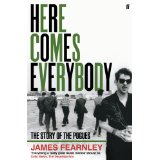 I’ve always been a fan of the “inside story” biography, particularly those that aren’t ghost-written attempts at cultural revisionism. This memoir by James Fearnley is, at times, brutally and crushingly honest about members of The Pogues and he doesn’t spare himself either. The book begins by setting the scene with Shane MacGowan’s departure from the band in 1991 before moving back to Fearnley’s initial meeting with MacGowan at an audition for The Nips in 1980.
I’ve always been a fan of the “inside story” biography, particularly those that aren’t ghost-written attempts at cultural revisionism. This memoir by James Fearnley is, at times, brutally and crushingly honest about members of The Pogues and he doesn’t spare himself either. The book begins by setting the scene with Shane MacGowan’s departure from the band in 1991 before moving back to Fearnley’s initial meeting with MacGowan at an audition for The Nips in 1980.
The book is a (mainly) unsentimental account of the rise and fall of The Pogues from the viewpoint of someone close enough to see everything but with enough distance to retain some objectivity. From the chaotic managerless beginnings through the unpopular but successful stewardship of Frank Murray, the story is underpinned at all times by MacGowan’s unpredictability and seemingly random self-destructive urges. James Fearnley tries very hard to balance the singer’s inexcusable behaviour against the genius of the songs, but it’s up to you if you buy that line; I certainly don’t. My only criticism is that James Fearnley spends a little too much time trying to emphasise the fact that he’s a writer and occasionally introduces unnecessarily florid prose to prove it; putting that aside, it’s still a winner.
“Sounds like London: 100 Years of Black Music in the Capital” – Lloyd Bradley
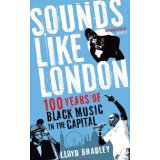 Bear with me for a minute here; this will all make sense presently. Earlier this year I read “How Soon is Now?: The Madmen and the Mavericks who made Independent Music 1975-2005” by Richard King. It’s a very good book and a must for geeks like us, but it attracted a lot of criticism because it didn’t touch on the black music scene. Richard King was even accused, pathetically, of racism in some quarters; you might even have read about it. Personally, I prefer to read authors who write about subjects they understand and that really inspire them; if Richard King didn’t have the expertise, contacts or inspiration to write about the black music scene, then Lloyd Bradley certainly did.
Bear with me for a minute here; this will all make sense presently. Earlier this year I read “How Soon is Now?: The Madmen and the Mavericks who made Independent Music 1975-2005” by Richard King. It’s a very good book and a must for geeks like us, but it attracted a lot of criticism because it didn’t touch on the black music scene. Richard King was even accused, pathetically, of racism in some quarters; you might even have read about it. Personally, I prefer to read authors who write about subjects they understand and that really inspire them; if Richard King didn’t have the expertise, contacts or inspiration to write about the black music scene, then Lloyd Bradley certainly did.
The title is a little misleading; there’s very little about pre-1950s black music, and it also deals with regional English offshoots from the London scene but those aren’t criticisms, just observations. The reason for the comparison with Richard King’s book is that one of Lloyd Bradley’s recurring themes is that black British music has always developed and prospered healthily out of the mainstream when produced and distributed independently.
Once the book reaches the point where Lloyd Bradley can introduce interviews with the players who made black British music happen (the steel pan players, the jazzers, the sound system pioneers, the Britfunk players and the mainstream crossovers Eddy Grant, Janet Kay, Jazzie B and the rest), the narrative really takes off with stories of the sound systems and records being sold out of the back of a car and distributed around the country in the same way. Lloyd Bradley takes us through calypso, ska, reggae, lovers rock, dub, britfunk, 98 bpm, trip hop, jungle, d’n’b, UK garage, dubstep and grime along with a host of short-lived one-way streets with an unassuming and easy authority that is very seductive. If you want an introduction to black British music, this is the book for you.
OK, spoilers alert; I’ve relented. I’ll tell you that the chart-toppers Bob Stanley refers to in 1993 and 1995 respectively are Culture Beat’s “Mr Vain” and Celine Dion’s “Think Twice”, but you should still read the book. Actually you should read all of these books.


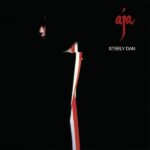 “Aja” – Steely Dan
“Aja” – Steely Dan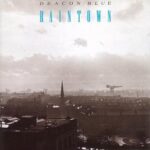 “Raintown” – Deacon Blue
“Raintown” – Deacon Blue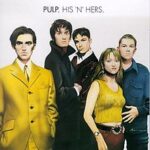 “His ‘n’ Hers” – Pulp
“His ‘n’ Hers” – Pulp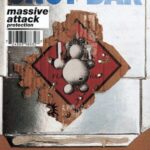 “Protection” – Massive Attack
“Protection” – Massive Attack